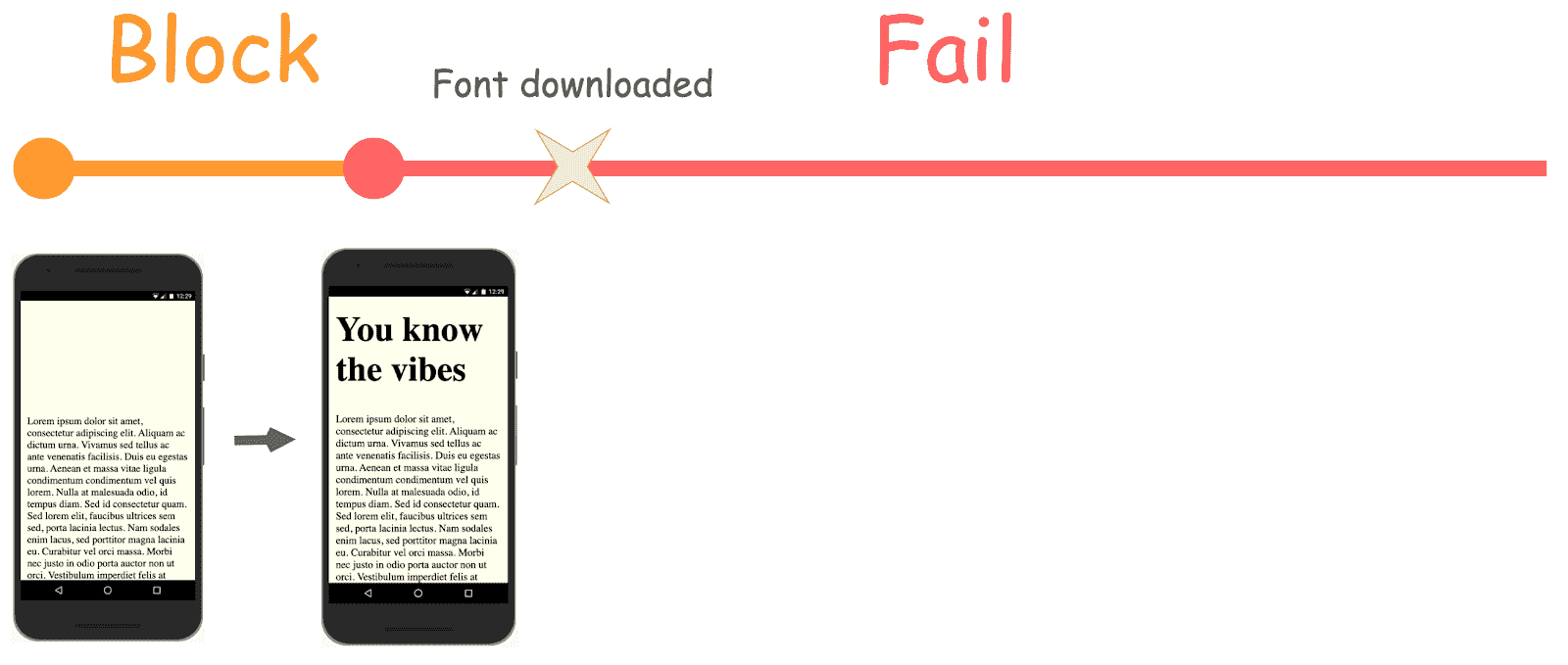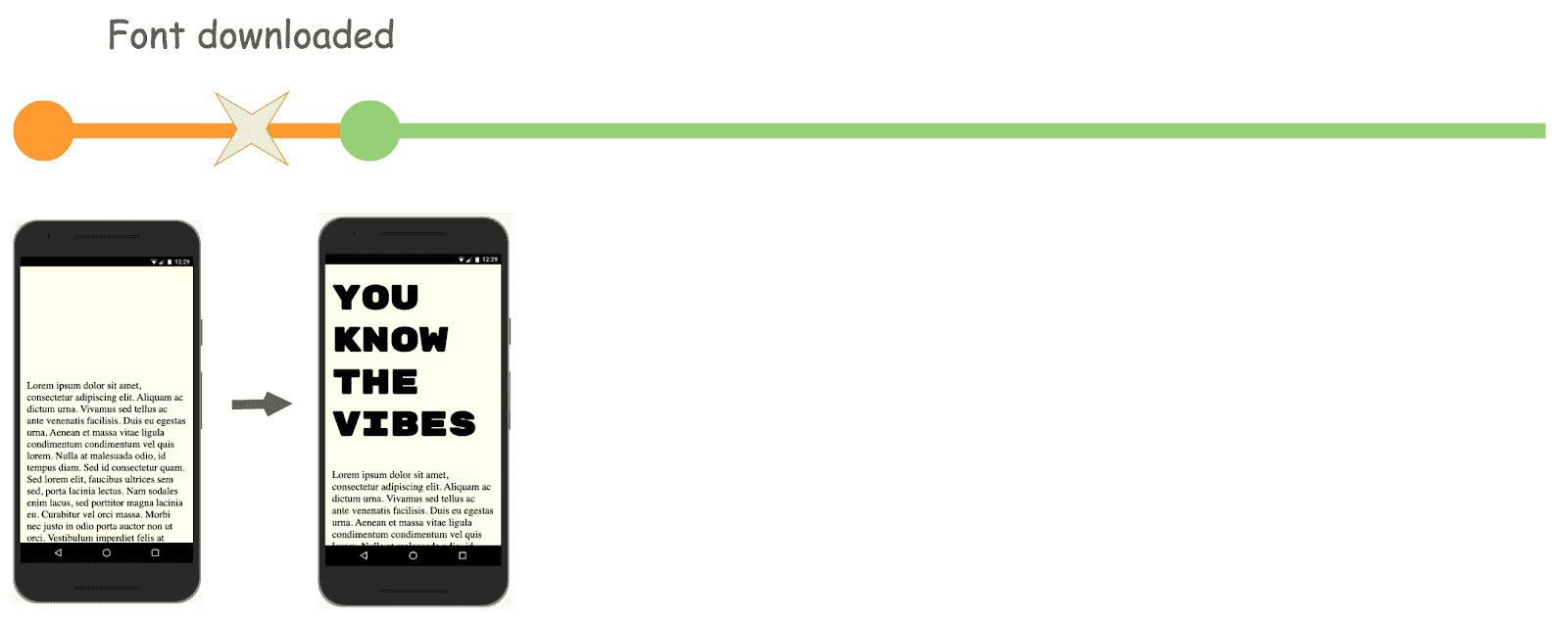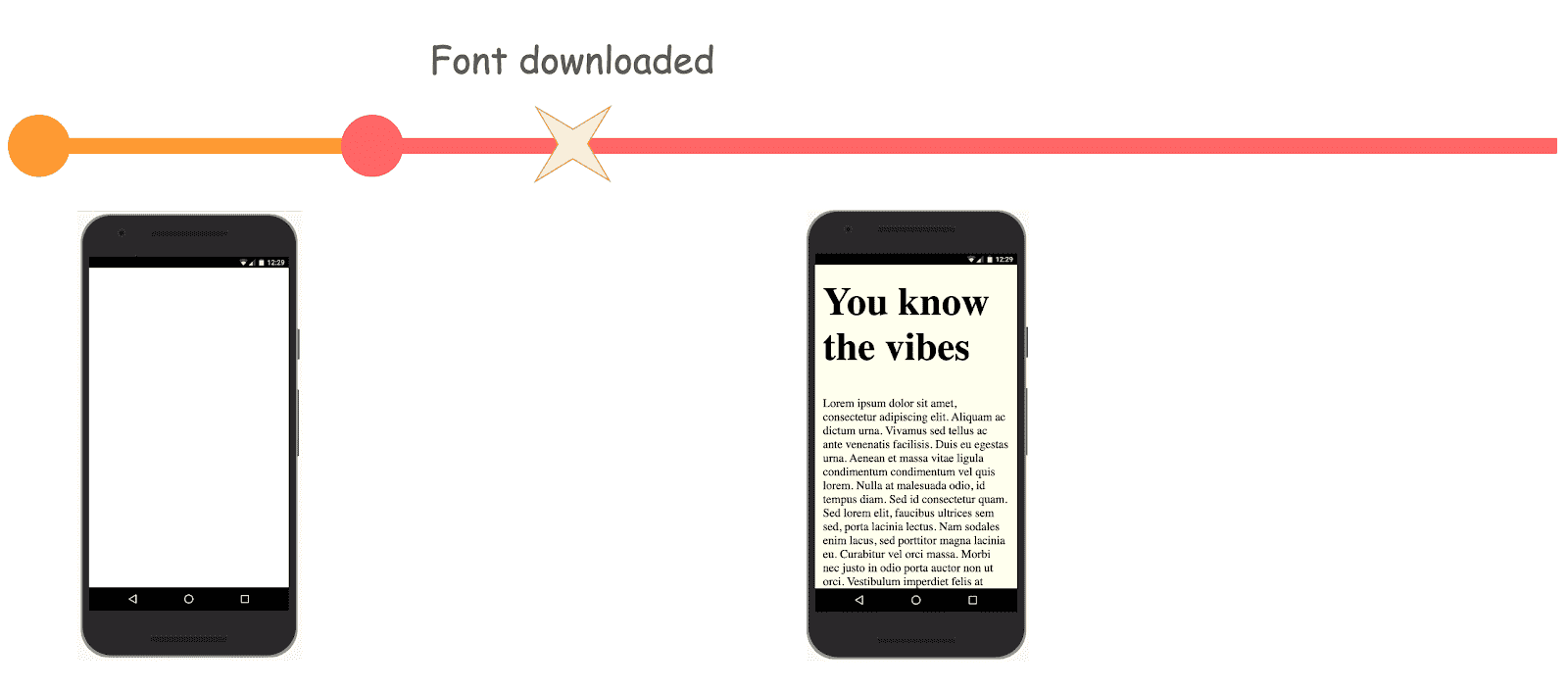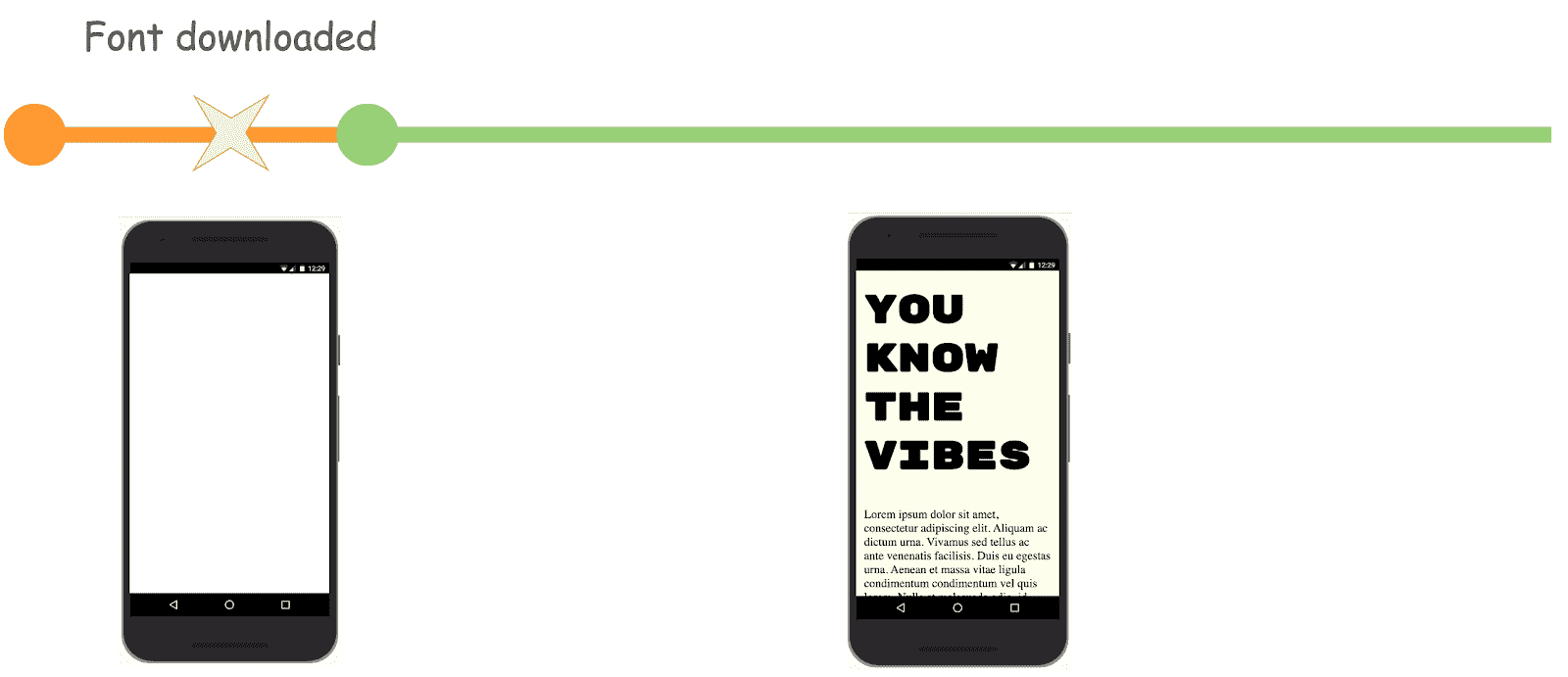Starting in Chrome 83, link rel="preload" and font-display: optional can be combined to remove layout jank completely
By optimizing rendering cycles, Chrome 83 eliminates layout shifting when preloading optional fonts.
Combining <link rel="preload"> with font-display: optional is the most effective way to
guarantee no layout jank when rendering custom fonts.
Browser compatibility
Check out MDN's data for up-to-date cross-browser support information:
Font rendering
Layout shifting, or re-layout, occurs when a resource on a web page changes dynamically, resulting in a "shift" of content. Fetching and rendering web fonts can directly cause layout shifts in one of two ways:
- A fallback font is swapped with a new font ("flash of unstyled text")
- "Invisible" text is shown until a new font is rendered into the page ("flash of invisible text")
The CSS font-display property provides a way to modify
rendering behavior of custom fonts through a range of different supported values (auto, block,
swap, fallback, and optional). Choosing which value to use depends on the preferred behavior
for asynchronously loaded fonts. However, every one of these supported values can trigger re-layout
in one of the two ways listed above, until now!
Optional fonts
The font-display property uses a timeline of three periods to handle fonts that need to be
downloaded before they can be rendered:
- Block: Render "invisible" text, but switch to the web font as soon as it finishes loading.
- Swap: Render text using a fallback system font, but switch to the web font as soon as it finishes loading.
- Fail: Render text using a fallback system font.
Previously, fonts designated with font-display: optional had a 100ms block period and no swap
period. This means that "invisible" text is displayed very briefly before switching to a fallback
font. If the font is not downloaded within 100ms, then the fallback font is used and no swapping
occurs.

font-display: optional behavior in Chrome when font is downloaded after the 100ms block periodHowever, in the case that the font is downloaded before the 100ms block period completes, the custom font is rendered and used on the page.

font-display: optional behavior in Chrome when font is downloaded before the 100ms block periodChrome re-renders the page twice in both instances, regardless of whether the fallback font is used or if the custom font finishes loading in time. This causes a slight flicker of invisible text and, in cases when a new font is rendered, layout jank that moves some of the page's content. This occurs even if the font is stored in the browser's disk cache and can load well before the block period is complete.
Optimizations have landed in Chrome 83 to entirely remove the first render cycle for optional fonts
that are preloaded with <link rel="preload'>.
Instead, rendering is blocked until the custom font has finished loading or a certain period of time
has passed. This timeout period is currently set at 100ms, but may possibly change in the near
future to optimize performance.

font-display: optional behavior in Chrome when fonts are preloaded and font is downloaded after the 100ms block period (no flash of invisible text)
font-display: optional behavior in Chrome when fonts are preloaded and font is downloaded before the 100ms block period (no flash of invisible text)Preloading optional fonts in Chrome removes the possibility of layout jank and flash of unstyled text. This matches the required behavior as specified in CSS Fonts Module Level 4 where optional fonts should never cause re-layout and user agents can instead delay rendering for a suitable period of time.
Although it is not necessary to preload an optional font, it greatly improves the chance for it to load before the first render cycle, especially if it is not yet stored in the browser's cache.
Conclusion
The Chrome team is interested to hear your experiences preloading optional fonts with these new optimizations in place! File an issue if you experience any problems or would like to drop any feature suggestions.

